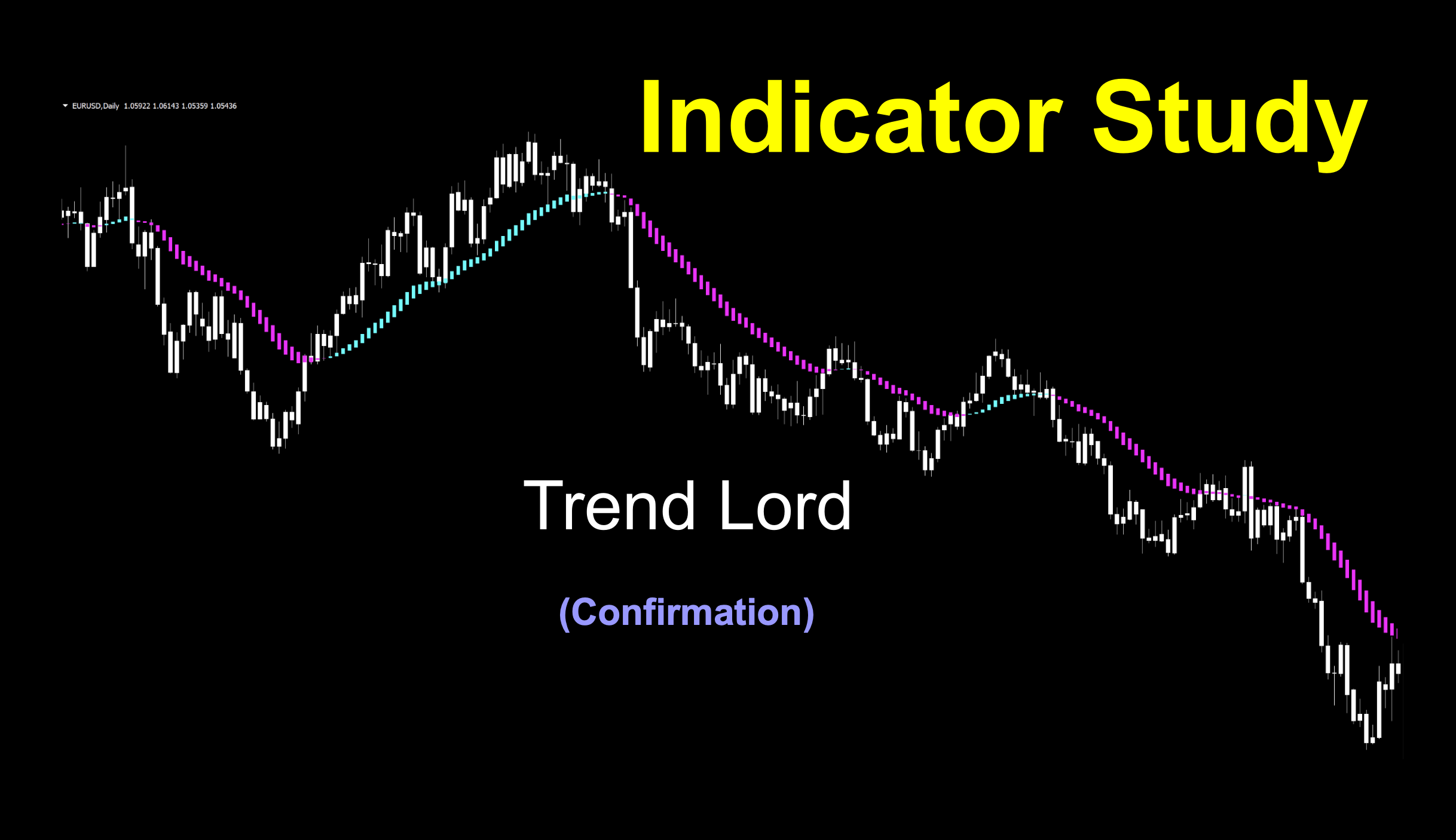Royalty in The House
This indicator came up during a conversation between NNFX and SHF last summer and, for whatever reason, it remained on our research shelf. That being said, we felt its time has come. We think you’ll like this one. Some of you may have run across it in your own research.
Not a Jester
This week, we’re taking a look at the non-repainting version of the Trend Lord indicator. Pretty lofty name, right? The first thing we noticed was that “non repainting” was in the name, which means there may be other versions. As far as we can tell through testing, this version lives up to its name. In any event, it was created in 2015 by a prolific MetaEditor coder who goes by the name “Gehtsoft”, although the notion of moving averages far proceeds 2015.
It’s All in The Code
The inner workings of this indicator are fairly straight forward. A choice of moving average type over a specified period using a selected data set. It’s pretty much the same as using the basic moving average indicator with options but, the advantage is that the color change gives you a clear signal.
Confirmation Indicator
This indicator is considered a chart overlay, meaning it lives on top of price. And, instead of a line, the indicator is represented as a histogram. The advantage here is that you see exactly what’s going on, especially if you’re using it as an exit indicator.
Rainbow in the Dark
In the screenshot below, we changed the original colors from cornflower blue & salmon to aqua & magenta and changed the thickness from two to five for better visibility. This was definitely one of those times that white candles help to prevent “color overload” and keep us focused on what’s important, the indicator.

Settings
There are a few variables and adjustments, but there are only three which are actually helpful for testing. The fourth one, “ShowHighLow” is a wild visual (which we’ll show you), but it doesn’t really add benefits.

Length: The number of periods used to calculate the indicator. The default setting is 12.
Mode: The type of moving average; simple, exponential, smoothed, and linear weighted. The default setting is 2 – smooth.
Price: The specific price data set; close, open, high, low, median, typical, weighted. The default setting is 0 – closed price.
Advantages
* Familiar indicator.
* Can be considered as an exit.
* Colors make it easy to see signals.
How We Use It
Long: When the histogram changes from red to blue, the entry occurs on the open of the next candle.
Short: When the histogram changes from blue to red, the entry occurs on the open of the next candle.
Before we look at the signals, let’s see what that “ShowHighLow” setting looks like. In reality, it creates a few confusing areas. The idea behind this feature is based on the use of the histogram. If you notice, the length of each histogram bar is the distance from the signal line to the bar itself.
Longer/Shorter
The longer the bar, the more momentum exists. The shorter the bar, the less momentum; and a possible change in direction may be in the near future. But, we’re not wizards, remember? We can’t know what’s coming, so having all that extra color “noise” on your chart isn’t helpful. Keep the signals…simple!

Now that we’ve moved past that exciting moment, let’s actually see what kind of signals we get using the default values.

Overall, not too bad. There were a couple of areas where your algorithm may have returned a break even or loss, but overall, it looks pretty good!
Testing…Testing…Testing…
Remember, comprehensive analysis is strongly suggested, and we advocate backwards and forward testing indicators or systems prior to trading actual funds. We propose conducting your tests on the following pairs.
EUR/USD
AUD/NZD
EUR/GBP
AUD/CAD
CHF/JPY
CAD/SGD
If it doesn’t work on these 6 pairs, chances are it won’t work on other pairs. This is not an absolute, but we’ve found this rule is reliable in most cases.
The markets we test our indicators are the:
EUR/USD (Euro/US Dollar)
BTC/USD (Bitcoin/US Dollar)
XAU/USD (Gold/US Dollar)
SPX500 (S&P500 Index)
Timeframes and Results
In our initial test, we’ll run the Trend Lord indicator on the EUR/USD, BTC/USD, XAU/USD, and the SPX500 using the default settings across the daily and 4-hour timeframes on the MT4 strategy tester. We use the fast method of testing the indicator to get a general idea; however, you may also run the tick-by-tick data set for a more precise result (which takes considerably more time).
As No Nonsense Traders – and therefore Swing Traders, we will not examine shorter time frames in these studies. We will also run an additional test, using different values for the settings, to analyze which one may work better and examine the following results:
Total trades
Win/Loss ratio
ROI (return on investment)
There are other metrics included in the strategy tester report, which can be compared, but these three metrics provide the necessary gauge to make quick decisions as to the usefulness of a particular indicator and its settings.
Next, for comparison, we’ll explore the following;
Daily – 1 year
4-hour – 3 months
The reason exceptionally long (or short) testing periods are not included is due to changing market conditions, which might return irrelevant information. A balance of statistically significant data is necessary for accurate results.
And the Outcome…
Below are the spreadsheets illustrating the results from our tests.
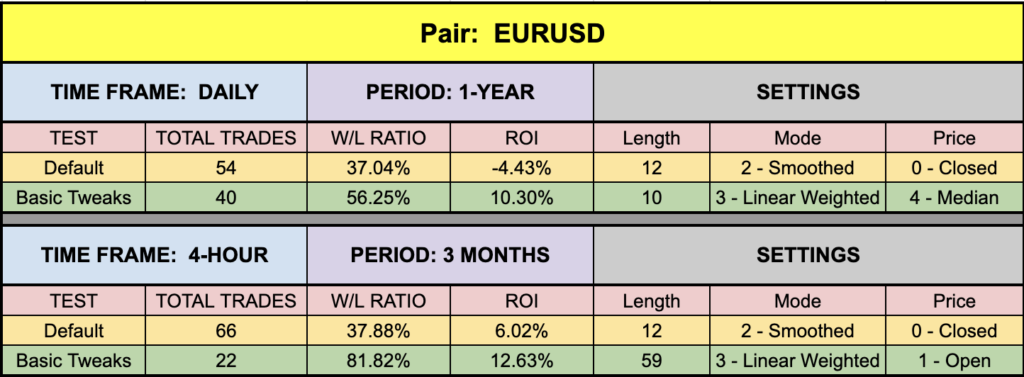
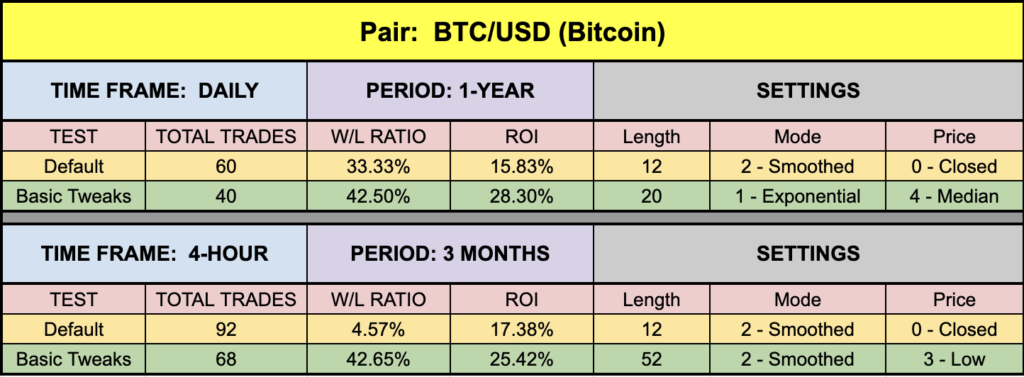
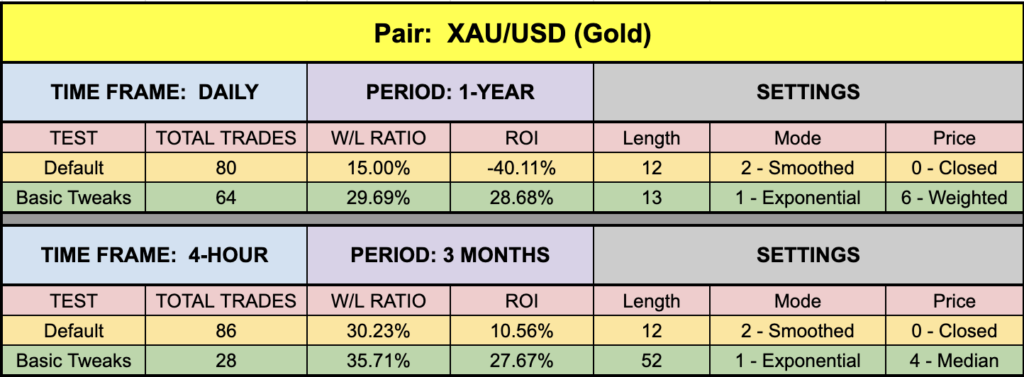
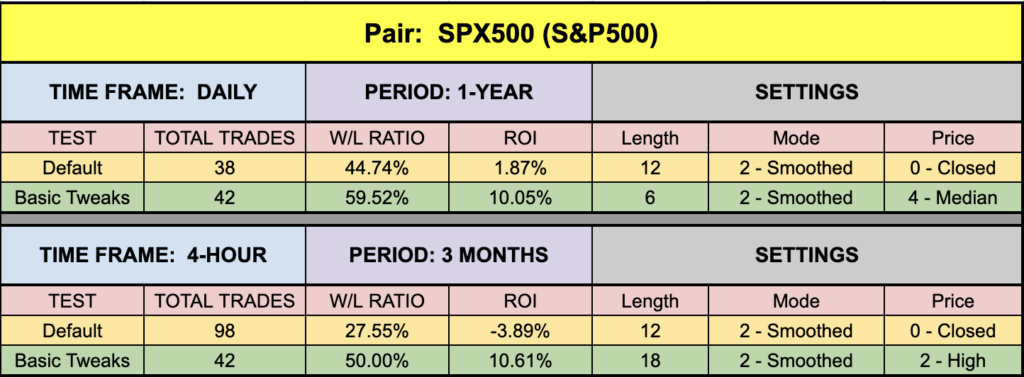
Resources
As we did with past indicator studies, we’ve made the Trend Lord indicator is available for download on our site from the indicator library. When you’re ready to get it, click HERE. Also, be sure to subscribe to the Stonehill Forex YouTube channel for the technical analysis videos. Sign up for the Advanced NNFX Course HERE.
Our only goal is to make you a better trader.
*Our published testing results are based on money management strategies employed by the NNFX system and depend on varying external factors, which may be different between individuals and their specific broker conditions. No guarantee, trading recommendations, or other market suggestions are implied. Your results and subsequent trading activities are solely your own responsibility.
BTW – Any information communicated by Stonehill Forex Limited is solely for educational purposes. The information contained within the courses and on the website neither constitutes investment advice nor a general recommendation on investments. It is not intended to be and should not be interpreted as investment advice or a general recommendation on investment. Any person who places trades, orders or makes other types of trades and investments etc. is responsible for their own investment decisions and does so at their own risk. It is recommended that any person taking investment decisions consults with an independent financial advisor. Stonehill Forex Limited training courses and blogs are for educational purposes only, not a financial advisory service, and does not give financial advice or make general recommendations on investment.

